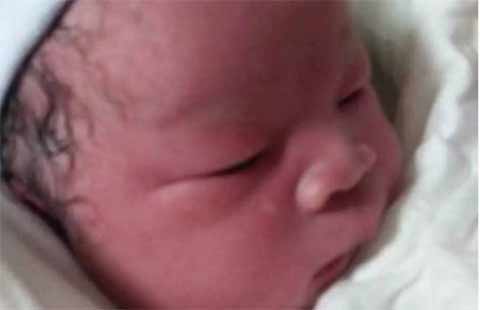White paper on medical and health services in China
(China Daily) Updated: 2012-12-27 09:26Urban and rural grass-roots level medical and health services have been further improved. The government has invested more to ensure the funding for grass-roots medical and healthcare institutions. From 2009 to 2011, the central government invested 47.15 billion yuan to support the building and development of grass-roots level medical institutions. Diverse forms have been adopted to strengthen the ranks of healthcare workers at the grass-roots level, and preferential policies have been made to train and introduce competent personnel for rural and community healthcare. A system of general practitioners (medical workers with sufficient knowledge in all branches of medicine) has been established, under which general practitioners are trained in the regular way; grass-roots medical and healthcare workers are enrolled in training courses for upgrading them to general practitioners; and medical students are specially trained for the needs of central and western urban areas, for which they do not have to pay their tuition fees. A project, known as "ten thousand doctors extending support to rural medical care," has been launched. From 2009 to 2011, over 1,100 Grade-III urban hospitals extended support to 955 rural county-level hospitals every year, and urban medical institutions above Grade II in central and western China granted aid to over 3,600 township hospitals every year, thus helping improve the overall technological level and management of the county and township hospitals. Meanwhile, the mode of medical services has been changed. Touring medical services have been provided in township hospitals; and in the urban districts ranks of general practitioners have been formed and a system of family doctors has been set up. Prevention has been combined with the treatment, measures have been taken to ensure basic needs of the residents to see doctors and make it possible that the diagnosis and treatment of most commonly seen and frequently occurring diseases are performed at the community level. After years of effort, community-level medical and healthcare system has been strengthened; marked changes have taken place to the situation of backward facilities and poor services in rural and remote areas; community-level medical workers have increased in number, and their educational background and knowledge have improved. In 2011, the number of grass-roots medical and healthcare institutions across the country reached 918,000, including 26,000 urban community service centers, 38,000 township hospitals and 663,000 village clinics, and the number of hospital beds reached 1,234,000.
Access to basic public health services has become more equitable. The state provides all residents with a free package of 41 basic public health services in ten categories, including health record, health education, preventive inoculation, healthcare for children under six, healthcare for pregnant and lying-in women, healthcare for elderly people, treatment for hypertension and type II diabetes patients, healthcare for severe psychosis patients, reporting and handling of infectious diseases and public health emergencies, and healthcare supervision and coordination. Targeting special diseases, key groups and special areas, the state has launched key public health service programs, including subsidizing rural pregnant women for hospitalized childbirth, re-vaccinating people under 15 against hepatitis B, eliminating fluorosis caused by coal burning, supplementary taking of folic acid by rural women before pregnancy and in the early stage of pregnancy, building sanitary toilets, cataract removal for poor patients, cervical and breast cancer tests for rural women within eligible age, and preventing mother-to-child transmission of AIDS. In 2011, the inoculation rate of the National Immunization Program (NIP) exceeded 90%; the rate of hospitalized childbirth nationwide reached 98.7% (98.1% in rural areas); and the maternity mortality rate in rural areas kept going down. In the rural areas, 72.1% of the population had access to tap water and 69.2% had access to sanitary toilets. In 2009, the government launched a program to provide cataract operations for a million poor patients, and by 2011 more than 1.09 million such people had had such operations with government subsidies.
The reform of public hospitals has been carried on in an orderly way. In 2010, the Chinese government started pilot reforms of public hospitals in 17 state-designated cities and 37 province-level districts; and positive progress has been witnessed in improving services, innovating institutions and mechanisms, strengthening internal management and speeding up the creation of a situation in which hospitals are established and run in diversified forms. In 2012, the government launched a pilot comprehensive reform of county-level public hospitals, aiming to improve rural system of medical services with the county hospitals playing the leading role, and enabling 90% of the population in a county to see doctors. So far, over 600 counties in 18 provinces, autonomous regions and municipalities directly under the central government have been included in this reform. The government has worked hard to improve medical services, optimize the allocation of medical resources, and enhance the medical capabilities of weak areas and weak fields. The capabilities of key clinical specialties in regional medical centers and county-level hospitals to deliver medical services have been enhanced, and the mechanism of division of responsibilities and cooperation between public hospitals and community-level medical institutions is being studied and formed. The government has intensified efforts in the creation of a situation of establishing and running hospitals in diversified forms, encouraging and guiding non-governmental funds to establish both for-profit and non-profit medical institutions. By 2011, there were 165,000 medical institutions established with non-governmental investment, including 8,437 private hospitals, accounting for 38% of the national total. Doctor-appointment service, time-phased outpatient service and high-quality nursing service that bring benefits and convenience to the people have been introduced nationwide. The fast price growth of medicine has been contained. In comparable prices, the growth rates of average outpatient and inpatient costs in public hospitals has decreased year by year in the past three years, and that of 2011 went down by eight percentage points from that of 2009, reaping initial results in expense control for public hospitals.
- Health certificate steps reduced for foreigners
- Himalayan rail route endorsed
- Beijing lawyer Zhou Shifeng jailed for subversion
- China opens S China Sea website
- Ministry issues draft rules for car-hailing business
- 700 officials punished by green teams
- Hangzhou learns the language of summit success
- Panda twin births boost the hopes for survival
- Top court clarifies law at sea
- Nida's landfall brings travel to a standstill










